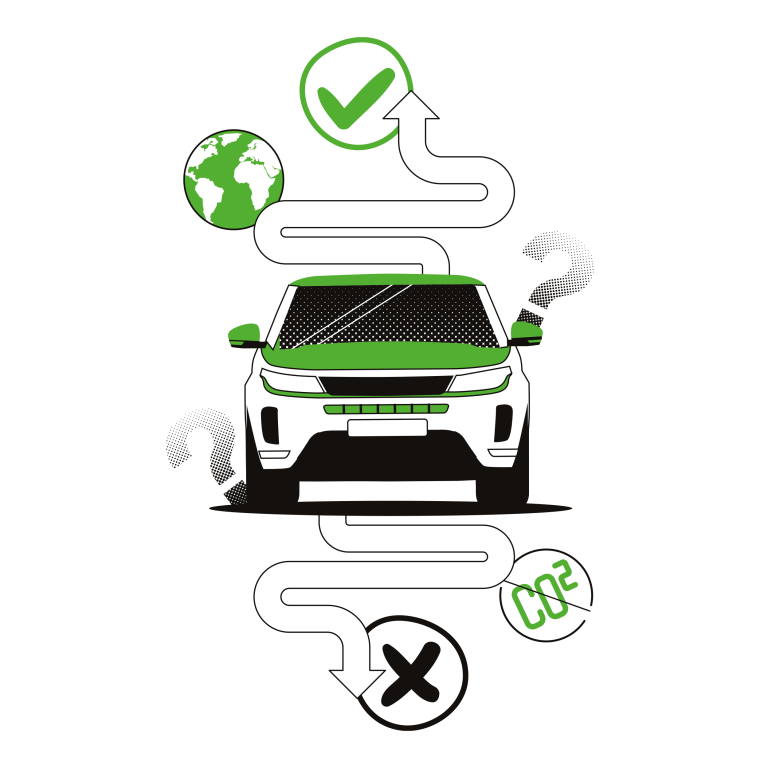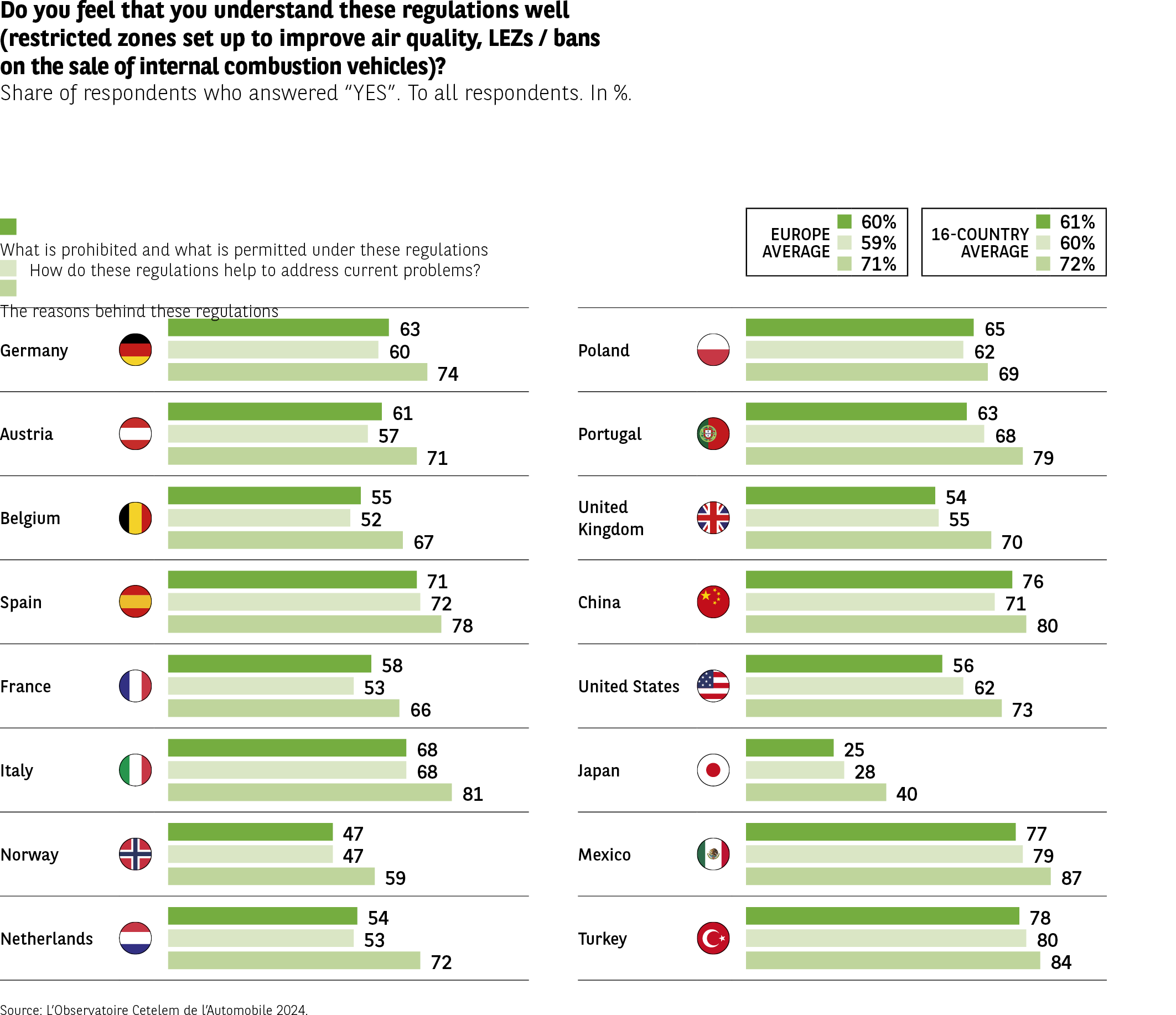Motorists face diverse and complex regulations


With ZFEs in France (Zone à Faibles Émissions), ZTLs in Italy (Zona Traffico Limitato), LEZs (Low Emission Zones) and ULEZs (Ultra Low Emission Zones) in the UK, or even ZEZs (Zero Emission Zones), all kinds of acronyms are now fighting it out to describe the same reality. These are urban areas to which access is granted only to the least polluting vehicles, according to criteria defined by the government, in the aim of improving air quality and public health. Regardless of the name they are given, they differ from RTZs (Restricted Traffic Zones), which are not contingent on pollutant emissions. Sweden was a pioneer in this field in the late 1990s and other European countries later followed suit.
With the introduction of these LEZs, motorists are now faced with a shifting reality, a kind of regulatory chameleon that is constantly adapting to its environment. The underlying principles and implementation of LEZs vary greatly from country to country. What’s more, regulations within a country can differ from one city to the next and at any time.
Out of all the countries covered by this survey, only four have not yet set up LEZs: China (only applicable to heavy goods vehicles), the United States (one such zone is being trialled in Santa Monica, California), Turkey and Mexico (where projects are under discussion).
LEZs, follow the guide!

- NORWAY : three zones, in Bergen, Kristiansand and Oslo. Toll rates are calculated based on each vehicle’s pollutant emissions.
- NETHERLANDS : ow-emission zones target diesel vehicles only. The rules are enforced by cameras and by the police.
- PORTUGAL : the Lisbon area is divided into two zones, one where the minimum requirement is Euro 2 and the other where it is Euro 3.
- UNITED KINGDOM : 22 low-emission zones in the United Kingdom, with varying requirements and timetables.
- GERMANY : 82 environmental zones in Germany, with different rules and timetables.
- SPAIN : the “Distintivo Ambiental” environmental badge must be affixed to the windscreens of Spanish and foreign vehicles if they wish to enter such zones.
- FRANCE : a Crit’Air sticker, of which there are six different categories, is required for French or foreign vehicles to enter LEZs.
- ITALY : there are several zones in Italy, with requirements and timetables that differ from region to region, and even from one city to the next.
- BELGIUM : Antwerp and Brussels city centres are designated environmental zones.
- JAPON : five prefectures have introduced a low-emissions policy, resulting in a ban on high-polluting diesel lorries and buses entering certain zones.
Technical regulations: an EU measure that has created a fog
When it comes to engine regulations, a strong technical background is needed to keep up with all the subtleties. While these requirements have naturally evolved in step with scientific knowledge, manufacturers have also applied as much pressure as possible to delay their implementation or steer them in their preferred direction, as illustrated by the so-called Ferrari amendment* to EU regulations, which was recently adopted. Others have chosen to bend the rules, or even circumnavigate them entirely in the case of Volkswagen.
A quick glance at these European examples is enough to realise the complexity facing motorists.
*This amendment passed by the European Parliament gives manufacturers of ultra-luxury cars additional time to go all-electric and reduce their CO2 emissions
Euros visio, name that tune!

- Euro 1 : vehicles are only tested for hydrocarbons, nitrogen oxides and particulates in the case of diesel engines. Switch to unleaded petrol.
- Euro 2 : reduction of carbon monoxide and the unburnt hydrocarbons + nitrogen oxide combination. Catalytic converters mandatory on diesel engines.
- Euro 3 : warm-up period removed from the test procedure. Splits hydrocarbon and nitrogen oxide limits. Applies NOx limits to diesels for the first time.
- Euro 5 : diesel vehicles are subject to a new limit on particulate emissions. Emission of the equivalent of one grain of sand per kilometre travelled. Introduction of particle filters for new diesel vehicles.
- Euro 6 : exhaust gas recirculation. A portion of these gases is mixed with the intake air to lower the combustion temperature.
- Euro 6a/6b : limits on NOx gas emissions. Selective catalytic reduction, in which a liquid reducing agent is injected through a catalyst into the exhaust of a diesel vehicle.
- Euro 7 : vehicles are required to remain compliant for longer. Brakes and tyres are taken into account in limiting particulate emissions from combustion and electric vehicles.
Motorists apparently understand this well

Faced with this regulatory jungle, the clear- sightedness of motorists can only be applauded. 6 out of 10 respondents consider them to be a decent solution to current problems. The Turks, Mexicans and Chinese are once again the most likely to display this level of understanding, along with the Spanish, Portuguese and Italians (around 80%). Conversely, the Japanese sharply disagree on this point (72% do not understand). In fact, Japan is the only country, along with Norway, where negative views outweigh positive opinion. In France, the “yes” camp achieves a slim majority.
An almost identical proportion of motorists also feel that they understand what is prohibited and what is permitted. On this question, a largely similar geographical split is apparent, although the Portuguese seem slightly less convinced. Once again, the Japanese are by far the most likely to express confusion (75%).
Above all, however, just over 7 out of 10 respondents understand the reasons behind these regulations, with the Mexicans and Turks again emerging as the undisputed champions of regulatory intelligence while the Japanese remain stubbornly entrenched at the foot of the ranking. It should be noted here that Japan is the only country where a majority of people claim not to understand anything (Fig. 7).
Rural dwellers are also less convinced than urbanites when it comes to the effectiveness of these measures in solving environmental problems.
So, is a comprehensive understanding of these complex measures relating to traffic and engine types enough for them to be accepted wholesale? Not especially, because the reasons behind the concerns and worries of motorists are not confined to the regulatory framework they inhabit.
Fig 7 – Understanding of environmental regulations (ZFE, thermal ban…)
Download this infographic for your presentations Bars indicating:
Yes, well understood
No
I don’t know
Global trend:
Limited understanding in Europe (≈ 35-55%)
Very strong understanding declared in China (84%).
Bars indicating:
Yes, well understood
No
I don’t know
Global trend:
Limited understanding in Europe (≈ 35-55%)
Very strong understanding declared in China (84%).
